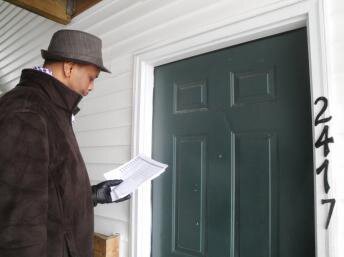Gas wells’ leftovers may wash into Ohio

A boom in natural-gas drilling in Pennsylvania could bring millions of barrels of salty toxic waste into Ohio.
Since then, gas companies have raced to open drilling sites. But the Marcellus shale wells produce so much brine that Pennsylvania officials are, for the first time, limiting how much can be dumped in that state’s rivers.
Tom Stewart, vice president of the Ohio Oil and Gas Association, and Jack Shaner, lobbyist for the Ohio Environmental Council, predict that Pennsylvania companies will soon truck their well wastes to Ohio, where brine is injected into 159 privately owned, state-regulated disposal wells. It is illegal to dump brine in Ohio streams and rivers.
Stewart said, “I have a big problem that that (well) capacity isn’t overloaded by out-of-state water.”
Shaner said, “We’re looking at a wave of toxic brine headed into this state.”
That’s why both support a bill in the Ohio legislature that would create a 20-cent-per-barrel disposal tax on brine shipped in from other states. That’s four times as much as a proposed 5-cent-per-barrel tax on Ohio brine.
The plan also has the support of Ohio mining officials, who say the tax would raise about $400,000 a year to help regulate injection wells.
Pennsylvania officials said they don’t know of any plans to send brine to Ohio, though they say they are searching for additional disposal methods.
That search is tied to the large amounts of water – as much as 4 million gallons per well – that drillers use to help fracture the shale and create a flow of gas. That water is often laced with acids, industrial gels and chemicals used to kill microorganisms.
Much of that water comes back up with the gas, along with salt water that already exists underground. Though treatment plants can remove the chemicals, they typically lack the expensive equipment needed to remove the salt, said Tom Rathbun, spokesman for the Pennsylvania Department of Environmental Protection.
As a result, Marcellus brine has frequently raised the salt content of the Monongahela and Susquehanna rivers above a state water-quality limit. Last year, the state began limiting how much salt may be dumped into streams.
Louis D’Amico, director of the Independent Oil and Gas Association of Pennsylvania, said the state lacks the geology for injection wells to work. Ohio doesn’t have the geology to drill for natural gas in the Marcellus, but it does have the right rock for injection wells.
D’Amico said that, instead of shipping brine out of state, Pennsylvania drilling companies are looking at new treatment systems and recycling options.
“We want to dispose of it as closely as possible to its source,” he said.
Tom Tomastik, an Ohio Department of Natural Resources geologist in charge of the agency’s injection-well program, said his office doesn’t track where the brine injected into Ohio wells comes from. Last year, 6.5million barrels of brine were injected.
Stewart said that, with the number of Marcellus wells being drilled – 763 last year – it’s logical to expect that some will come to Ohio. A bill containing the tax passed the Ohio Senate in December and is being debated in the House.
States have tried and failed to bar other states’ castoffs, including trash shipped across state lines. Three 1994 U.S. Supreme Court decisions declared trash no different from any other interstate commodity.
Stewart said he thinks that Ohio’s proposed brine tax would hold up in court if it’s challenged. Shaner isn’t as confident.
“On balance, this is a good move,” Shaner said. “By all means, let’s try it.”
That’s a warning Ohio’s oil and gas industry and environmentalists are sounding as hundreds of deep wells are drilled into Marcellus shale.
Though the black shale holds the promise of a huge, untapped source of energy, the wells also produce brine – highly concentrated salt water that is mixed with man-made acids and other chemicals used in drilling.
In February 2008, geologists and energy companies announced that they had figured out a way to extract natural gas from the thick black rock about 6,000 feet underground. The shale holding the best prospects covers 54,000 square miles, from upstate New York across Pennsylvania and into eastern Ohio and most of West Virginia. It could contain as much as 50 trillion cubic feet of recoverable natural gas.
Source: The Columbus dispatch
Comments
comments
 Calendar
Calendar





































